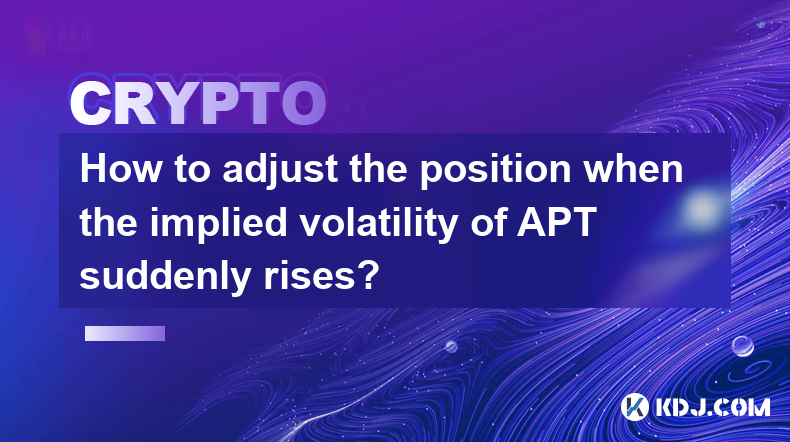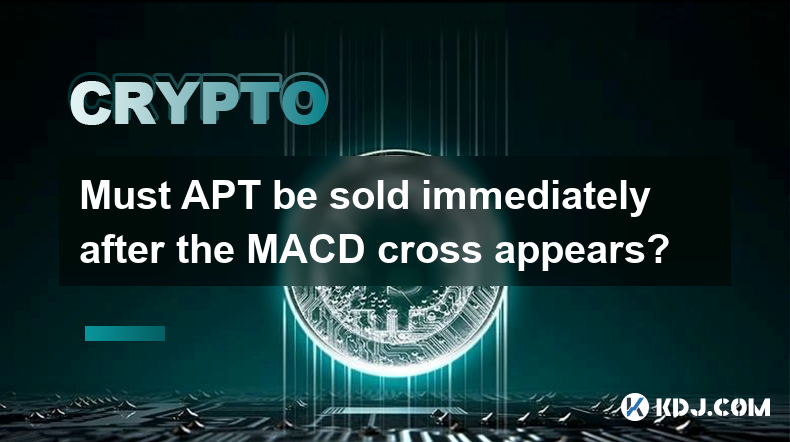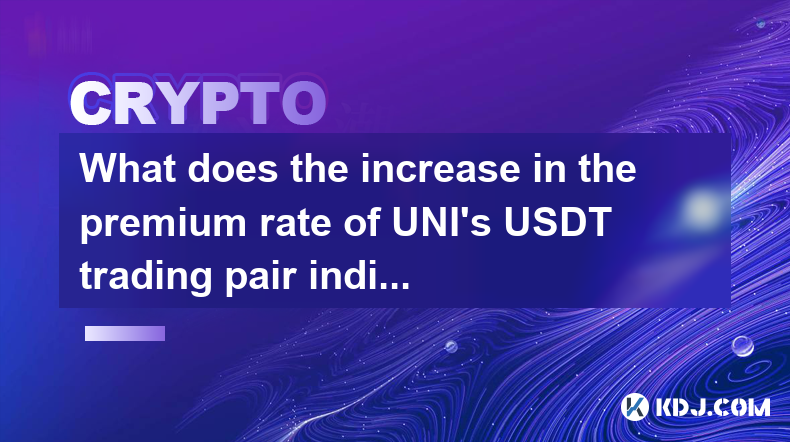-
 Bitcoin
Bitcoin $92,791.8043
-1.35% -
 Ethereum
Ethereum $1,755.1542
-3.41% -
 Tether USDt
Tether USDt $1.0002
-0.01% -
 XRP
XRP $2.1670
-5.40% -
 BNB
BNB $597.8018
-2.59% -
 Solana
Solana $148.6654
-3.10% -
 USDC
USDC $1.0000
0.00% -
 Dogecoin
Dogecoin $0.1741
-5.86% -
 Cardano
Cardano $0.6943
-2.44% -
 TRON
TRON $0.2457
-0.42% -
 Sui
Sui $3.0286
2.61% -
 Chainlink
Chainlink $14.4764
-4.73% -
 Avalanche
Avalanche $22.0152
-4.12% -
 UNUS SED LEO
UNUS SED LEO $9.2234
2.05% -
 Stellar
Stellar $0.2687
-2.01% -
 Toncoin
Toncoin $3.1166
-0.77% -
 Shiba Inu
Shiba Inu $0.0...01320
-3.99% -
 Hedera
Hedera $0.1818
-3.34% -
 Bitcoin Cash
Bitcoin Cash $347.4785
-3.75% -
 Polkadot
Polkadot $4.0211
-3.26% -
 Litecoin
Litecoin $81.4299
-4.20% -
 Hyperliquid
Hyperliquid $17.9559
-5.59% -
 Dai
Dai $1.0000
-0.01% -
 Bitget Token
Bitget Token $4.3936
-4.77% -
 Ethena USDe
Ethena USDe $0.9992
-0.02% -
 Pi
Pi $0.6496
-3.57% -
 Monero
Monero $224.5697
-2.17% -
 Uniswap
Uniswap $5.7648
-4.97% -
 Pepe
Pepe $0.0...08565
-7.33% -
 Aptos
Aptos $5.3125
-1.27%
Does the increase in net outflow of APT exchanges represent bullishness?
Increased net outflow of APT from exchanges may signal bullish sentiment, as investors move tokens to private wallets, indicating long-term confidence in APT's value.
Apr 24, 2025 at 06:57 pm

The concept of net outflow of APT (Aptos) from exchanges and its potential correlation with bullish sentiment is a topic of interest within the cryptocurrency community. The net outflow refers to the volume of APT tokens being withdrawn from cryptocurrency exchanges, which can be interpreted as a signal of investor behavior and market sentiment. This article will delve into the intricacies of this phenomenon and explore whether an increase in net outflow of APT exchanges represents bullishness.
Understanding Net Outflow in Cryptocurrency
Net outflow of a cryptocurrency from exchanges is a metric that tracks the difference between the amount of tokens being withdrawn from exchanges and the amount being deposited. When the net outflow is positive, it means more tokens are being withdrawn than deposited. This movement can be indicative of investors moving their assets to private wallets, which is often interpreted as a sign of long-term holding rather than short-term trading.
In the context of APT, an increase in net outflow could suggest that investors are increasingly confident in the future value of the token. By moving their APT to private wallets, they may be signaling a belief that the token's price will appreciate over time, thus reducing their exposure to exchange-related risks such as hacks or regulatory actions.
Factors Influencing Net Outflow
Several factors can influence the net outflow of APT from exchanges. One significant factor is market sentiment. If the overall sentiment towards APT is positive, investors might be more inclined to withdraw their tokens from exchanges to hold them in private wallets. This action can be seen as a vote of confidence in the project's future.
Another factor is price volatility. During periods of high volatility, investors might withdraw their APT to avoid potential losses from sudden price drops. Conversely, if the price is stable or on an upward trend, investors might feel more comfortable holding their tokens on exchanges for quick trading opportunities.
Regulatory news can also play a role. If there are concerns about potential regulatory crackdowns on cryptocurrency exchanges, investors might move their APT to private wallets to safeguard their assets. This movement could lead to an increase in net outflow, even if it's not directly related to bullish sentiment towards APT itself.
Interpreting Net Outflow as a Bullish Signal
An increase in net outflow of APT from exchanges can be interpreted as a bullish signal for several reasons. First, it suggests that investors are accumulating APT, which can be a precursor to price appreciation. When more tokens are held in private wallets, the circulating supply on exchanges decreases, potentially leading to a supply shock if demand remains constant or increases.
Second, long-term holding is often associated with bullish sentiment. Investors who believe in the long-term potential of APT are more likely to move their tokens to private wallets, where they can hold them securely for an extended period. This behavior indicates a belief in the project's fundamentals and future growth prospects.
However, it's important to consider that net outflow alone is not a definitive indicator of bullishness. Other market indicators, such as trading volume, price trends, and on-chain metrics, should be analyzed in conjunction with net outflow data to form a more comprehensive view of market sentiment.
Case Studies of Net Outflow and Market Performance
To better understand the relationship between net outflow and market performance, let's examine a few case studies involving APT.
In one instance, a significant increase in net outflow of APT coincided with a period of positive news about the project's development and partnerships. This increase in net outflow was followed by a notable rise in APT's price, suggesting that the withdrawal of tokens from exchanges was indeed a bullish signal.
In another case, a surge in net outflow occurred during a period of heightened regulatory scrutiny on cryptocurrency exchanges. While APT's price initially remained stable, it eventually experienced a slight decline. This example illustrates that net outflow can be influenced by factors beyond market sentiment, and its impact on price can vary.
Analyzing Net Outflow Data
To analyze net outflow data effectively, investors should follow these steps:
- Gather data: Collect data on the net outflow of APT from various cryptocurrency exchanges. This data can often be found on blockchain analytics platforms.
- Compare with historical data: Look at historical net outflow data to identify trends and patterns. Understanding how net outflow has correlated with price movements in the past can provide valuable insights.
- Consider other indicators: Analyze other market indicators, such as trading volume, price trends, and on-chain metrics, to get a holistic view of market sentiment.
- Monitor news and developments: Stay informed about news and developments related to APT and the broader cryptocurrency market. These factors can influence investor behavior and net outflow.
By following these steps, investors can gain a deeper understanding of the significance of net outflow and its potential implications for APT's market performance.
Potential Risks and Considerations
While an increase in net outflow of APT from exchanges can be a positive sign, there are several risks and considerations to keep in mind. Market manipulation is one potential risk. Large investors or "whales" might intentionally move significant amounts of APT to private wallets to create a false sense of bullishness, influencing other investors to buy in and drive up the price.
Liquidity concerns are another consideration. If too many APT tokens are withdrawn from exchanges, it could lead to reduced liquidity, making it more difficult for investors to buy and sell the token. This situation could negatively impact price stability and trading activity.
Additionally, external factors such as macroeconomic trends, regulatory changes, and technological developments can influence investor behavior and net outflow. It's crucial to consider these broader factors when interpreting net outflow data.
Frequently Asked Questions
Q: How can I track the net outflow of APT from exchanges?
A: You can track the net outflow of APT from exchanges by using blockchain analytics platforms such as Glassnode, CryptoQuant, or Nansen. These platforms provide real-time data on token movements, allowing you to monitor the net outflow of APT and other cryptocurrencies.
Q: What other metrics should I consider alongside net outflow to gauge market sentiment?
A: In addition to net outflow, you should consider metrics such as trading volume, price trends, on-chain transaction volume, and social media sentiment. These metrics can provide a more comprehensive view of market sentiment and help you make more informed investment decisions.
Q: Can net outflow be a bearish signal in certain situations?
A: Yes, net outflow can be a bearish signal in certain situations. For example, if investors are withdrawing APT from exchanges due to concerns about the project's fundamentals or regulatory risks, it could indicate a lack of confidence in the token's future value. It's important to consider the broader context and other market indicators when interpreting net outflow data.
Q: How does net outflow affect the liquidity of APT on exchanges?
A: An increase in net outflow of APT from exchanges can reduce the token's liquidity on those platforms. When more tokens are held in private wallets, fewer are available for trading on exchanges, which can lead to wider bid-ask spreads and increased price volatility. Investors should be aware of potential liquidity risks when considering net outflow data.
Disclaimer:info@kdj.com
The information provided is not trading advice. kdj.com does not assume any responsibility for any investments made based on the information provided in this article. Cryptocurrencies are highly volatile and it is highly recommended that you invest with caution after thorough research!
If you believe that the content used on this website infringes your copyright, please contact us immediately (info@kdj.com) and we will delete it promptly.
- After Years of "PUA", Zora Finally Issued a Coin, but the Community Users Did Not Get the "Big Result" They Wished For
- 2025-04-24 21:20:11
- Bitcoin (BTC) Has Exceeded the Realized Price of Short-term Holders, Exciting Analysts
- 2025-04-24 21:20:11
- PEPE Price Surge Re-enters the Crypto Spotlight with a 17% Breakout
- 2025-04-24 21:15:12
- US President Donald Trump Signed an AI Executive Order
- 2025-04-24 21:15:12
- Spot Bitcoin ETF inflows are at their highest since January 2025.
- 2025-04-24 21:10:12
- Mantle Network Launches MI4, a Institutional-Grade Digital Asset Index Fund Targeting $400M Market Gap
- 2025-04-24 21:10:12
Related knowledge

How to adjust the position when the implied volatility of APT suddenly rises?
Apr 24,2025 at 09:42pm
When the implied volatility of APT suddenly rises, it can significantly impact your trading positions. Adjusting your positions effectively requires a thorough understanding of the situation and a strategic approach. In this article, we will explore how to manage your positions when the implied volatility of APT increases unexpectedly. Understanding Imp...

Does the increase in net outflow of APT exchanges represent bullishness?
Apr 24,2025 at 06:57pm
The concept of net outflow of APT (Aptos) from exchanges and its potential correlation with bullish sentiment is a topic of interest within the cryptocurrency community. The net outflow refers to the volume of APT tokens being withdrawn from cryptocurrency exchanges, which can be interpreted as a signal of investor behavior and market sentiment. This ar...

Must APT be sold immediately after the MACD cross appears?
Apr 24,2025 at 07:43pm
The question of whether APT (Aptos) should be sold immediately after a MACD (Moving Average Convergence Divergence) cross appears is a common one among traders. The MACD is a popular technical indicator used to identify potential buy and sell signals in the cryptocurrency market. However, the decision to sell APT immediately after a MACD cross is not st...

What does the increase in the premium rate of UNI's USDT trading pair indicate?
Apr 24,2025 at 09:21pm
The increase in the premium rate of UNI's USDT trading pair is a significant indicator within the cryptocurrency market, reflecting various dynamics and sentiments among traders and investors. This phenomenon can provide insights into the perceived value, demand, and market conditions surrounding Uniswap's native token, UNI. In this article, we will exp...

Is the excessive premium of SUI futures contracts a bullish signal?
Apr 24,2025 at 08:29pm
The phenomenon of excessive premiums in SUI futures contracts has sparked significant interest and debate within the cryptocurrency community. SUI, the native token of the Sui blockchain, has been experiencing notable price discrepancies between its futures and spot markets. This article delves into the intricacies of these premiums, exploring whether t...

How to judge the buying and selling timing of SUI through changes in trading volume?
Apr 24,2025 at 04:08pm
Understanding SUI and Trading VolumeSUI is a cryptocurrency that, like many others, is subject to the ebbs and flows of market dynamics. One of the critical indicators that traders use to gauge the right timing for buying and selling SUI is trading volume. Trading volume refers to the number of SUI units traded within a given period, typically measured ...

How to adjust the position when the implied volatility of APT suddenly rises?
Apr 24,2025 at 09:42pm
When the implied volatility of APT suddenly rises, it can significantly impact your trading positions. Adjusting your positions effectively requires a thorough understanding of the situation and a strategic approach. In this article, we will explore how to manage your positions when the implied volatility of APT increases unexpectedly. Understanding Imp...

Does the increase in net outflow of APT exchanges represent bullishness?
Apr 24,2025 at 06:57pm
The concept of net outflow of APT (Aptos) from exchanges and its potential correlation with bullish sentiment is a topic of interest within the cryptocurrency community. The net outflow refers to the volume of APT tokens being withdrawn from cryptocurrency exchanges, which can be interpreted as a signal of investor behavior and market sentiment. This ar...

Must APT be sold immediately after the MACD cross appears?
Apr 24,2025 at 07:43pm
The question of whether APT (Aptos) should be sold immediately after a MACD (Moving Average Convergence Divergence) cross appears is a common one among traders. The MACD is a popular technical indicator used to identify potential buy and sell signals in the cryptocurrency market. However, the decision to sell APT immediately after a MACD cross is not st...

What does the increase in the premium rate of UNI's USDT trading pair indicate?
Apr 24,2025 at 09:21pm
The increase in the premium rate of UNI's USDT trading pair is a significant indicator within the cryptocurrency market, reflecting various dynamics and sentiments among traders and investors. This phenomenon can provide insights into the perceived value, demand, and market conditions surrounding Uniswap's native token, UNI. In this article, we will exp...

Is the excessive premium of SUI futures contracts a bullish signal?
Apr 24,2025 at 08:29pm
The phenomenon of excessive premiums in SUI futures contracts has sparked significant interest and debate within the cryptocurrency community. SUI, the native token of the Sui blockchain, has been experiencing notable price discrepancies between its futures and spot markets. This article delves into the intricacies of these premiums, exploring whether t...

How to judge the buying and selling timing of SUI through changes in trading volume?
Apr 24,2025 at 04:08pm
Understanding SUI and Trading VolumeSUI is a cryptocurrency that, like many others, is subject to the ebbs and flows of market dynamics. One of the critical indicators that traders use to gauge the right timing for buying and selling SUI is trading volume. Trading volume refers to the number of SUI units traded within a given period, typically measured ...
See all articles























































































